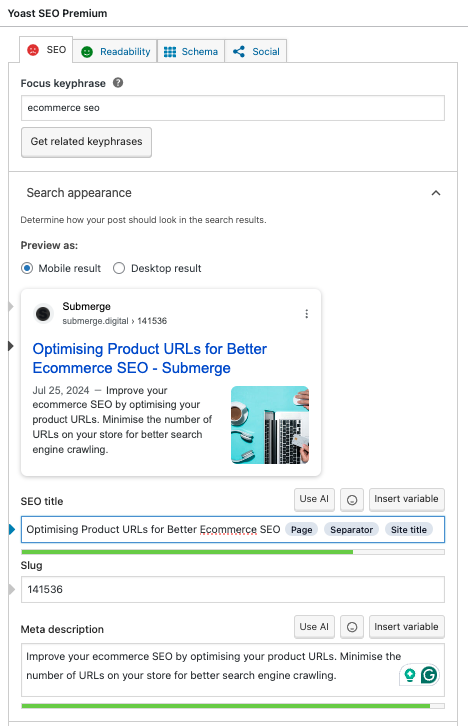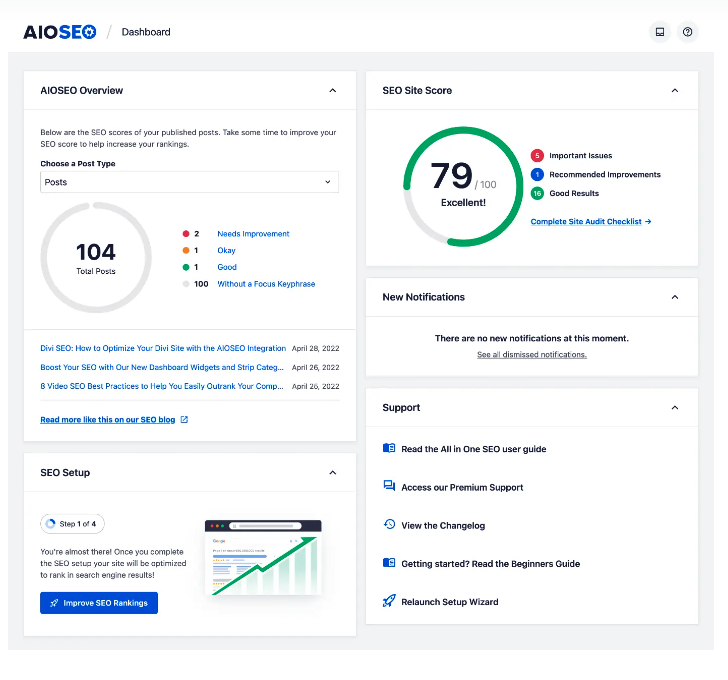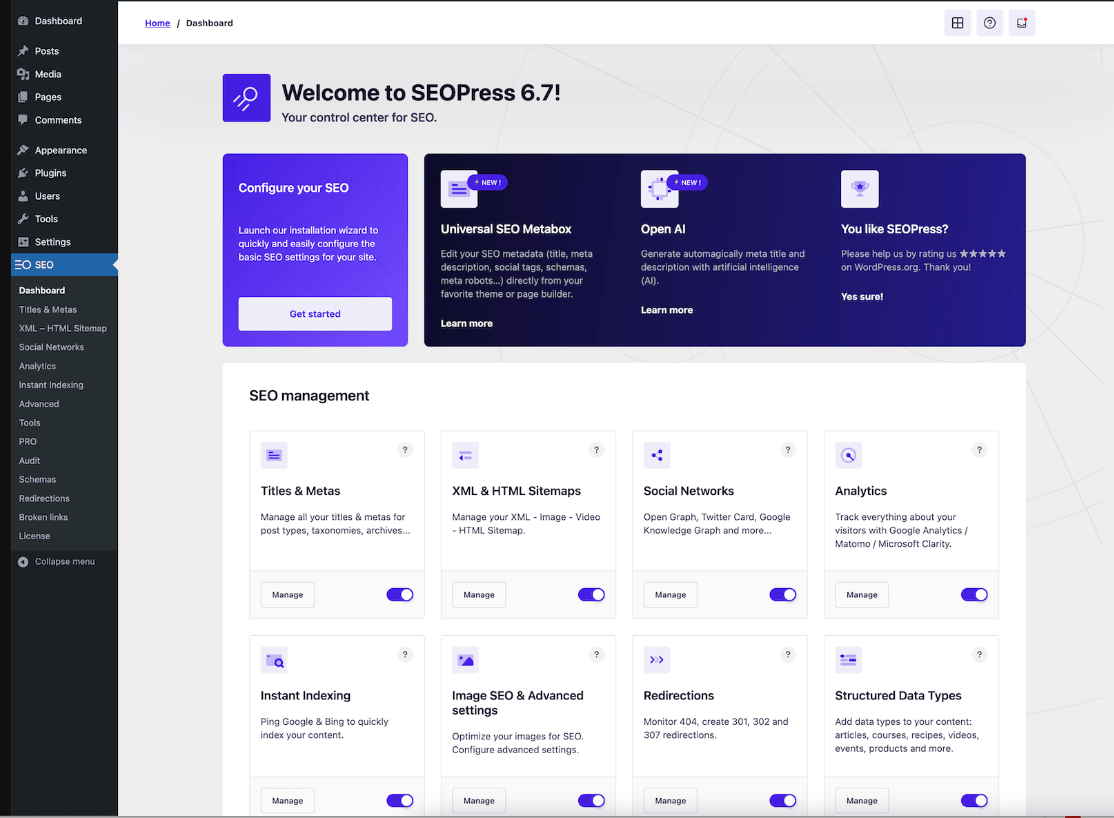SEO for ecommerce – everything you need to know
Looking to drive more traffic to your ecommerce site and increase sales? The answer isn’t just in paying for PPC ads or posting more frequently on social media – it’s in your SEO strategy.
Whether your business offers digital products, bespoke services or physical products such as clothing, skincare or electronics, Ecommerce SEO can be a key tool in your bid to drive business growth, covering multiple areas like website structure and content. With a robust but flexible ecommerce SEO strategy, you could find your business thriving in no time.
What is ecommerce SEO?
Ecommerce SEO is all about doing better for your business and, by extension, your customers. By optimising your ecommerce website for better visibility and user experience (UX), your potential customers will find it easier to find your store and your products or services.
To increase your visibility and SEO rankings, you need to improve the performance of your website, particularly your product and category pages. Rather than improving one aspect of your site for SEO, take a more holistic approach and work on multiple areas for maximum results.
SEO is a worthwhile, long-term investment in your ecommerce business that could generate a higher ROI.
Why is SEO so important for ecommerce?
In order to make all the sales you’re hoping for, your customers need to know that you exist. Online visibility isn’t always easy among the thousands of competitors that dominate the marketplace. With so many businesses looking for customer attention, making SEO a priority can help you stand out and show potential customers what you can offer them before your competition does.
If your website has a good SERP ranking, high visibility on search engines like Google means more traffic and potentially more sales. Plus, customers often equate high search rankings with credibility and trustworthiness.
But ecommerce SEO isn’t just about visibility – it’s a proven tool for building customer trust and driving business growth. An effective SEO strategy also improves elements such as on-page SEO, SEO web page design, technical SEO and UX, making navigation easier and increasing loading times on your site.
13 SEO tips for ecommerce excellence
1 . Guide your keyword research using buyer intent
Not all keywords are created equal. During your keyword research, there are a number of factors you should consider when selecting which keywords you want to rank for.
- Volume – The estimated number of monthly searches for a keyword
- Difficulty – The effort needed to rank highly for a keyword
- Competition – The number of other pages trying to rank for a keyword
- Intent – The goal a searcher has when using a keyword
Intent can either be commercial, informational, navigational or transactional. As an ecommerce business, commercial and transactional keyword intent would typically be the most important for your business, as these searchers are looking for specific products or services and want to make a purchase.
Basing your SEO efforts on these keywords could help you strategically reach your goals – and prevent you from wasting time and resources.
2. Add keyword-optimised product descriptions
Keyword-optimised product descriptions can significantly increase the visibility of an ecommerce site in SERPs. When your product descriptions contain keywords that potential customers are using in their searches, search engines can more accurately index and rank your pages. As a result, you get more traffic to your site.
Well-optimised descriptions also make your products more relevant to user queries, increasing the chances of click-through and conversions. They also enhance user experience by providing useful, targeted information, which makes it easier for customers to make informed purchasing decisions – and could help you boost your profit margin.
3. Pay attention to long-tail keywords
Long-tail keywords (specific phrases used in search) might have lower search volume than shorter keywords, but they can often have high purchase intent. This is because they catch people further down the conversion funnel – users who search these terms are looking for something specific, so they can be closer to the point of purchase.
This also means that long-tail keywords typically have less competition than more generic, one-word keywords, which could make your website easier to rank. By targeting long-tail keywords, you can attract a specific type of customer to your site, potentially increasing the chances of conversions.
4. Use breadcrumbs
Don’t overlook the importance of a breadcrumb trail. This handy feature near the top of a page enables you to back to previous pages without reloading the site.
Breadcrumbs are navigational aids that help users understand their location on a website – and they have several benefits when it comes to SEO.
Firstly, they improve UX by providing a clear navigation path, reducing the likelihood of people getting frustrated and leaving the site. Secondly, breadcrumbs help search engines understand and index your site’s structure, improving its visibility in search results. Google often displays breadcrumb paths in search results, providing some additional context for users and potentially improving click-through rates.
5. Prioritise alt tags
Alt tags (‘alternative text descriptions’) are the unsung heroes of e-commerce SEO. They are crucial for a few reasons. Firstly, they increase accessibility, providing information about the image to visually impaired users who use screen readers – this can boost your website’s reputation with search engines that value user-friendly web design.
Secondly, they provide search engines with context for images on your website. This also helps to improve product visibility on image search results, potentially driving additional traffic to your site.
6. Create high-quality content
High-quality content is a cornerstone of effective ecommerce SEO. Having great content on your site enhances user experience by providing valuable information – potentially boosting customer loyalty – and also improves your visibility on search engines.
Plus, engaging, relevant content can lower bounce rates, foster customer loyalty and attract backlinks from reputable sites, increasing your site’s authority.
By integrating targeted keywords, SEO-optimised content can boost your ranking on SERPs, driving more organic traffic that could lead to conversions (and more sales).
Want to improve your content? Read about why brand stories matter.
7. Don’t forget about link building
Link building – getting high-quality inbound links (backlinks) from other authoritative websites – can enhance your ecommerce site’s SEO by increasing its authority and visibility.
When reputable sites link to your online store, search engines view your site as more trustworthy and relevant, potentially boosting your ranking in search results. This can lead to increased organic traffic and conversions.
Both internal and external link building help search engines understand and index your site’s content.
8. Optimise product pages
Since product pages are where you want your target customers to go to make a purchase, it’s essential to make sure they are optimised.
This can include using high-quality images (reducing file size for faster load speed, adding relevant file names, and using alt text), internally linking to other relevant pages and writing keyword-rich descriptions.
Clear, useful descriptions also boost UX, increasing the likelihood of conversions and reducing your site’s bounce rate. A fast-loading, mobile-friendly product page can also reduce bounce rate and help to improve your SERP ranking.
9. Keep your URLs simple
Keeping URLs simple and descriptive is good for your site’s SEO.
Clear URLs are more user-friendly when they are easy to understand and they often lead to higher click-through rates from search results. They also allow search engines to understand the content of the page easily, which improves indexing.
URLs with appropriate keywords can provide additional relevance, potentially boosting your ecommerce site’s ranking in search results.
10. Increase your page speed
Increasing your site’s page speed is vital for ecommerce SEO – no one likes to hang around on a page that’s lagging.
Fast page load times enhance user experience, reducing bounce rates and increasing the likelihood of conversions.
Search engines like Google also use page speed as a ranking factor, so optimising your site for speed can improve your visibility in search results.
11. Prioritise UX
Prioritising UX is all about creating a logical, intuitive and well-designed website that will encourage users to stay longer, visit more pages and make a purchase. As a result, you could reduce your bounce rate and boost conversions.
These positive user behaviours signal to search engines that your store is valuable, improving your SERP ranking and visibility.
Something else worth considering is that Google highly recommends site owners achieve good Core Web Vitals for success with search. These are metrics related to speed, responsiveness and visual stability.
12. Use schema markups
A schema markup is a type of microdata that helps search engines understand your website’s content and what it means. It’s added to the HTML code of a webpage, but it can be placed in the head or body section of the HTML depending on the type of info you’re marking up.
A schema markup helps to improve the way search engines read and represent your webpage in SERPs. It provides detailed information about your site’s content, meaning any indexing is more accurate in search results.
This can lead to rich snippets or enhanced descriptions (like product ratings, price and availability), making your site’s listing more attractive and informative, potentially improving click-through rates.
Product schema is a specific type of schema markup designed especially for product-related information on ecommerce websites – it gives details about a product such as name, image, price, availability and review ratings.
13. Implement SEO plugins
An SEO plugin is a tool used on ecommerce sites to help optimise content for search engines. While it’s not a replacement for a comprehensive SEO strategy, a plugin can offer guidance on how to improve SEO factors like meta descriptions, title tags, content structure and keyword usage.
Try these SEO plugins for your ecommerce site:
Yoast
- Price – Free or £99p/y for Yoast Premium
- Compatible platforms – WordPress (Yoast for WordPress), Shopify (Yoast for Shopify), Woocommerce (Yoast Woocommerce SEO)
- What is it? Yoast is a comprehensive tool that simplifies SEO for website owners. It provides real-time page analysis to help you optimise content, titles, meta descriptions and keywords. It also includes features for improving readability, generating XML sitemaps and providing schema markups for better search engine understanding.
- Best for… Yoast is ideal for bloggers, business owners and anyone looking to improve their website’s visibility on search engines without needing in-depth SEO knowledge. Thanks to its seamless integration, it’s particularly handy for WordPress users.

All In One SEO
- Price – Free
- Compatible platforms – WordPress
- What is it? The All in One SEO (AIOSEO) plugin is a complete suite designed to optimise WordPress websites for search engines. Its features include meta tag generation, SEO integration for ecommerce sites, automatic XML sitemap creation and Google Analytics support. It also supports schema markup and offers advanced canonical URLs to stop any duplicate content.
- Best for… AIOSEO is extremely user-friendly, making it a perfect tool for beginners. It is also powerful enough for advanced users who want to fine-tune their ecommerce website’s SEO for maximum effect.

SEOPress
- Price – Free or $49 p/y for 5 websites or $149 p/y for unlimited websites
- Compatible platforms – WooCommerce, WordPress
- What is it? SEOPress is a versatile SEO plugin that assists in boosting your website’s traffic. It provides features like URL redirection, XML and HTML sitemaps, titles and meta descriptions and content analysis with unlimited keywords.
- Best for… SEOPress is user-friendly with a straightforward setup, making it ideal for beginners, but it also offers advanced options to cater to the needs of seasoned webmasters. It’s an ideal tool for any WordPress website owner aiming to improve their SEO.

Rank Math SEO
- Price – Free or $20.99 p/m for an advanced business subscription
- Compatible platforms – WooCommerce, WordPress
- What is it? Rank Math is a feature-packed SEO plugin that provides a variety of tools to enhance your ecommerce website’s SEO. Its features include keyword ranking tracking, SEO analysis based on 40 factors and rich snippets marking, among others.
- Best for… Rank Math works for both SEO beginners and experienced webmasters, thanks to its user-friendly setup wizard and modular approach. When running an ecommerce store, Rank Math can provide you with a helpful suite of tools to drive more organic traffic to your site.

Want to know more? Read about 10 free SEO tools for your website.
Nicole Percival
Nicole has been in the marketing and PR industries since she graduated university in 2019, but has been at Submerge since 2021. A keen reader and horror fanatic, Nicole has enjoyed writing since she was a small child, and has covered industries including consumer tech, food and beverages, business compliance, education, film and entertainment, and wellbeing.
Related Digital Marketing Resources
01/12/2025
The best AI tools for SEO in 2026
AI tools can help businesses improve SEO performance and save precious time.…
28/11/2025
The common paid search advertising mistakes hurting your ROI
Discover how to optimise paid search advertising and avoid common mistakes,…
21/11/2025
Social search: what it is and how to embrace it
Social media is rapidly changing how target customers interact with brands.…


